David Chipperfield's Fayland House conceived as a "large earthwork" in the English countryside
Pale white brickwork, broad columns and a courtyard planted with trees are all features of this country house in the Chiltern Hills by architect David Chipperfield, which was recently named the world's best new house (+ slideshow).
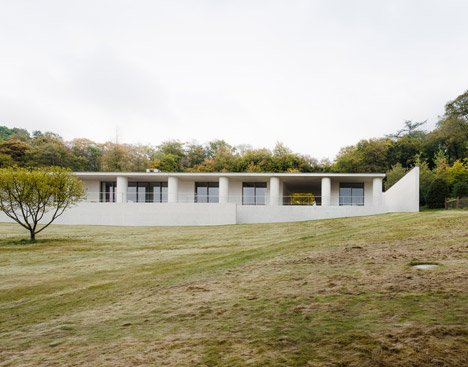
Fayland House is a single-storey residence that stretches across a dip in the landscape.
It won first prize in this year's AR House Awards, organised by the UK's Architectural Review magazine. The annual accolade is given to the one-off house judged best in the world by the magazine's panel – previous recipients include a Vietnam residence with trees on the roof and a self-sufficient courtyard house in China.
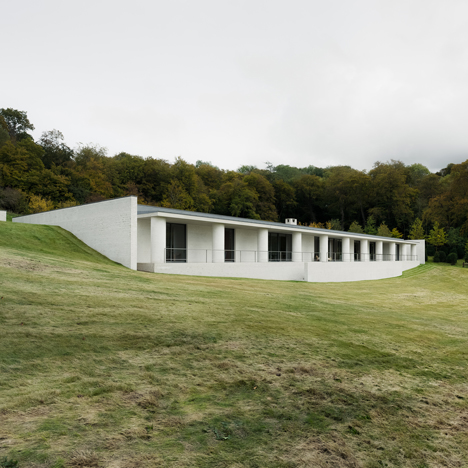
The house is located in the Chiltern Hills, a densely wooded chalk escarpment of over 300 square miles. Responding to this, the building was conceived as a "large earthwork" dug into the sloping ground.
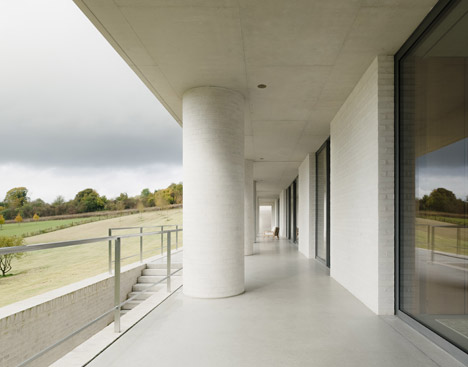
Its roof is set down well below the level of the tree canopy, while four sunken courtyards are concealed behind the walls.
The site had previously been occupied by an early 20th-century house made up of a series of eight buildings, including stables, a gym, a greenhouse and an outdoor swimming pool.
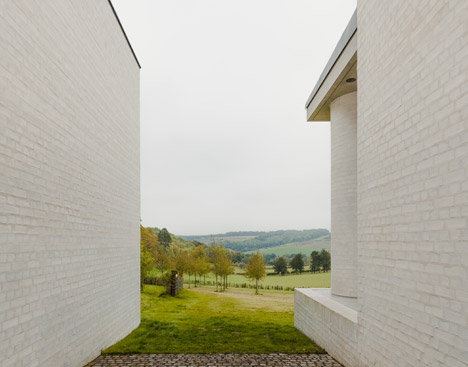
As with many of his projects – from the Saint Louis gallery in Missouri to his own office in Berlin – Chipperfield chose to simplify, creating a single 888-square-metre building all on one level.
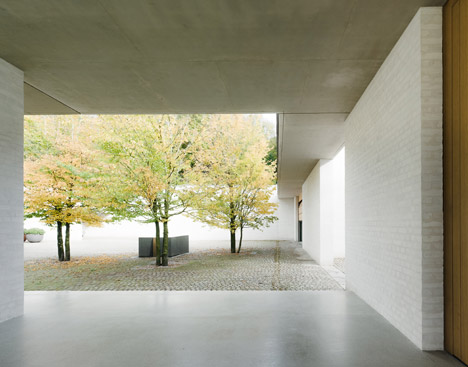
"This array of structures, together with hard landscaping, had accumulated in an ad-hoc manner with little relationship to each other or to their environment," said the design team. "The development presented an opportunity to restore a typical landscape by removing all conflicting features that had been superimposed onto it."
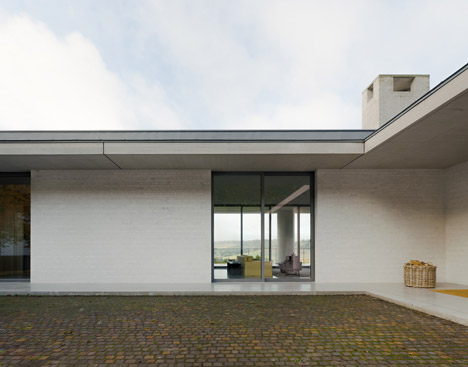
To negotiate the changing levels of the ground, the house is built on a 60-metre-wide plinth. The studio describes its as being "like a dam sitting on the cusp of the slope".
A colonnade framed by 11 round columns extends along the entire length of the facade, creating a sheltered outdoor space that connects with many of the rooms inside the building.
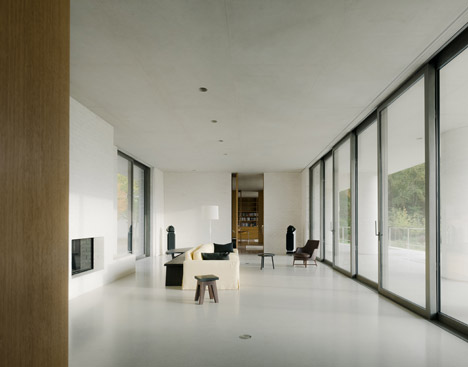
An opening towards one end leads through to the largest of the house's four courtyards, which forms the main entrance. It features a paved surface, three trees and more sheltered terrace spaces.

The walls, the columns and the plinth were all built using a custom-made white brick, set into a lime mortar that was applied thickly then sponged off to leave a thin residue behind.
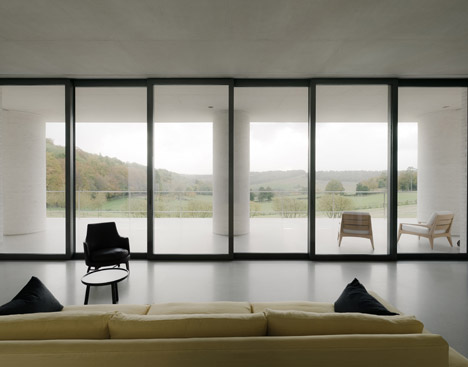
"The white colour of the bricks and the lime mortar is reminiscent of the chalk beneath the house," said the team. "On the one hand the house appears as a natural escarpment in the landscape, while on the other it affirms itself as a man-made structure expressed by the robust brick columns placed in front."
These brick walls have also been left exposed inside the house, sandwiched between an exposed concrete soffit and a polished terrazzo floor.
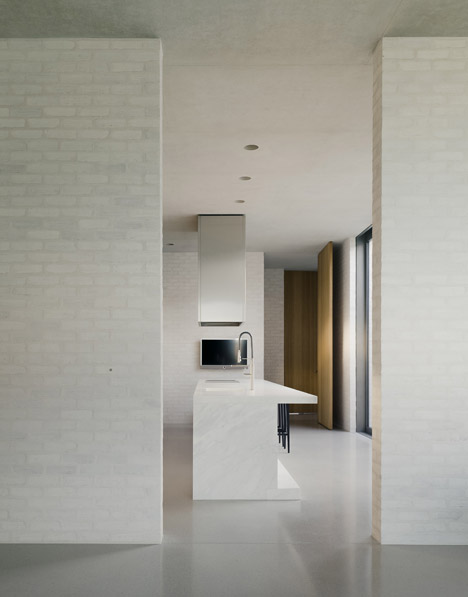
The main living room sits between the colonnade and the courtyard, allowing plenty of natural daylight and ventilation.
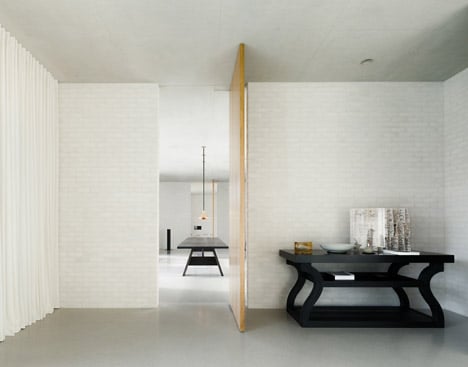
Other spaces, including the kitchen, dining and bedroom areas are arranged around the smaller courtyards, while rooms for guests are kept separate on the opposite side of the building.
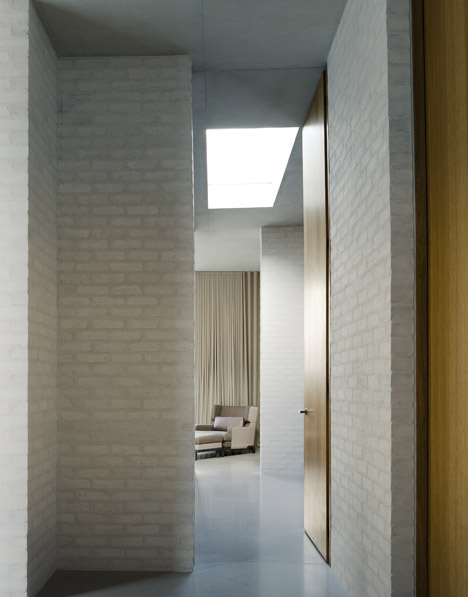
Fayland House was completed in 2013, but received the AR House award in June. The prize was judged by a panel including architects Adam Caruso of British firm Caruso St John and Sofia von Ellrichshausen of Chilean practice Pezo von Ellrichshausen.
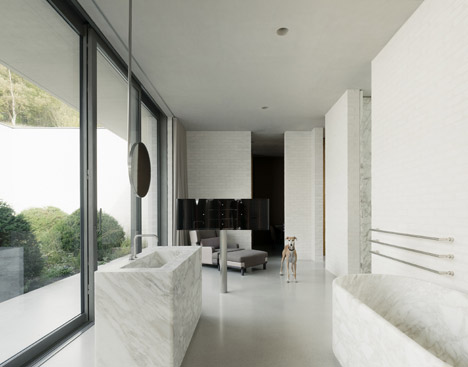
"Fayland House places a very large house in a special landscape without disappearing," said Caruso. "The domestic outdoor spaces, which have always been an issue in English country houses, are in courtyards, which is an innovation."
"It takes normal elements and manipulates them," added Von Ellrichshausen. "That colonnade in the front and the way it modulates the scale on the landscape is very interesting."
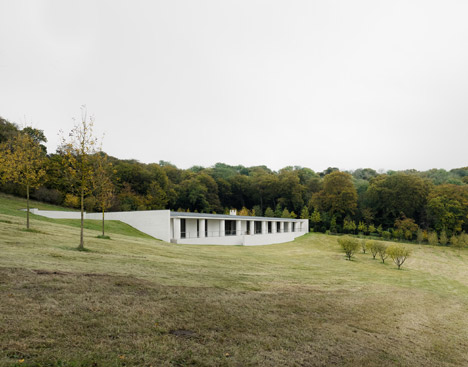
The house is located just five miles away from the River and Rowing Museum at Henley-on-Thames – Chipperfield's first major project in the UK. Other UK projects completed by the architect's firm since then include the Hepworth Wakefield gallery in Yorkshire and the Turner Contemporary gallery in Margate.
Photography by Simon Menges
Project credits:
Design architect: David Chipperfield Architects
Director: Franz Borho
Project architect: Patrick Ueberbacher
Landscape architect: Christopher Bradley-Hole
Structural engineer: Alan Baxter Associates